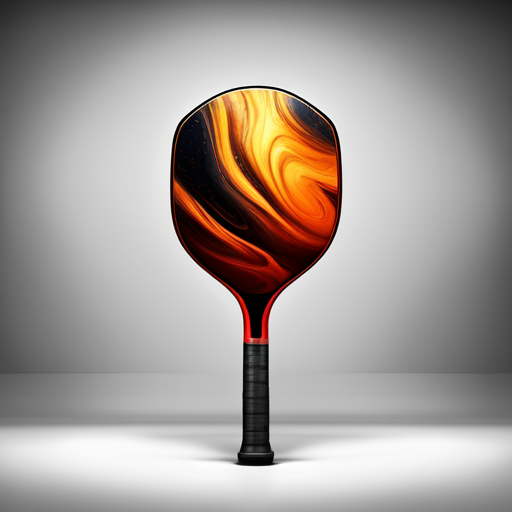Welcome to our pickleball blog! If you’re new to the exciting world of pickleball or considering taking it up, you may be wondering about the pickleball paddle rules and regulations regarding size and weight specifications. In this article, we will delve into the topic and provide you with a comprehensive understanding of paddle specifications in pickleball rules. Whether you’re looking to purchase your first paddle or simply want to ensure compliance with the regulations, this guide has got you covered.
Shop Pickleabll PaddlesTable of Contents:
- Why Are Paddle Specifications Important?
- USAPA Guidelines for Paddle Specifications
- Common Paddle Specifications
- Choosing the Right Paddle for You
Why Are Pickleball Paddle Rules Important?
Before diving into the regulations, let’s understand why paddle specifications hold such significance in pickleball. The specifications determine the performance, control, and power generated by a paddle. We’ll discuss the various aspects of paddle specifications, such as weight, length, width, and materials, and their impact on your gameplay.
USA Pickleball Guidelines for Paddle Specifications
The United States of America Pickleball Association (USAPA) serves as the governing body for pickleball in the United States. They have established guidelines that define the acceptable limits for paddle specifications. These guidelines are put in place to ensure fair play and maintain a level playing field for all players. Let’s take a closer look at the key aspects regulated by the USAPA:
- Paddle Dimensions:
- Length: According to the USAPA rules, pickleball paddles must not exceed 17 inches in length. The length is measured from the bottom of the handle to the top of the paddle’s head.
- Width: The maximum width allowed for a pickleball paddle is 7.5 inches. The width is measured across the widest part of the paddle’s head.
- Paddle Surface:
- Surface Materials: The USAPA allows various materials for the paddle’s hitting surface, including wood, composite materials, and graphite. However, certain tournaments or venues may have additional restrictions, so it’s essential to check the specific rules before participating.
- Paddle Weight:
- Weight Range: The USAPA sets a weight range for pickleball paddles, requiring them to fall between 6.9 to 14 ounces. The weight of the paddle affects the power and control you can generate during your shots. It’s crucial to find a weight that suits your playing style and comfort level.
- Paddle Construction:
- Core: The core of a pickleball paddle refers to the material inside the paddle that provides structure and responsiveness. The USAPA allows various core materials, such as polymer, aluminum, and nomex. Each material has its unique characteristics, influencing the paddle’s overall feel and performance.
- Edge Guard: The USAPA mandates that the paddle must have an edge guard, which is a protective strip around the perimeter of the paddle. The edge guard helps to protect the paddle from damage and extends its lifespan.
Learn more about Pickleball Paddle Construction
These guidelines ensure that all players have access to standardized equipment, promoting fair competition and maintaining the integrity of the game. It’s important to note that while these guidelines apply to official USAPA-sanctioned tournaments and competitions, recreational players may have more flexibility in paddle specifications.

Common Paddle Specifications
When you start exploring the world of pickleball paddles, you’ll come across various specifications that differentiate one paddle from another. Understanding these common specifications will help you make an informed decision when selecting a paddle that suits your needs. Here are some of the key paddle specifications to consider:
- Weight:
- Paddle weight is typically measured in ounces. Lighter paddles, around 6 to 8 ounces, offer maneuverability and control, making them suitable for finesse players. Heavier paddles, around 8 to 14 ounces, provide more power for aggressive shots and smashes. The weight you choose depends on your playing style and personal preference.
- Grip Size:
- The grip size refers to the circumference of the handle and affects your comfort and control while holding the paddle. Common grip sizes include small, medium, and large. It’s essential to find a grip size that feels comfortable in your hand and allows you to maintain a firm grip throughout your gameplay.
- Balance:
- Paddle balance refers to the distribution of weight between the handle and the head. Paddles can be categorized as head-heavy, handle-heavy, or balanced. Head-heavy paddles provide more power, while handle-heavy paddles offer better control. Balanced paddles aim to strike a balance between power and control. The choice of balance depends on your playing style and preferences.
- Surface Texture:
- Paddle surfaces can have different textures, such as smooth, textured, or rough. Textured or rough surfaces tend to generate more spin on the ball, allowing for greater control and placement. Smooth surfaces, on the other hand, offer less spin but provide a more consistent feel. The surface texture you choose depends on your playing style and the level of spin you prefer.
By considering these common paddle specifications, you can narrow down your options and find a paddle that suits your playing style, skill level, and personal preferences. Remember, finding the right paddle is an important step towards enhancing your performance and enjoyment of pickleball.
Choosing the Right Paddle for You
With a wide range of pickleball paddles available in the market, finding the right one can be overwhelming, especially for beginners. We’ll provide some valuable tips to help you navigate through the options and choose a paddle that enhances your performance on the court. Remember, finding the right paddle can significantly impact your overall playing experience.
Learn more about the Best Pickleball Paddles for Beginners
-
 $59.99
$59.99 -
Product on sale
 $34.95
$34.95 -
 $39.99
$39.99 -
 $39.99
$39.99 -
 $69.99
$69.99 -
 $64.95
$64.95 -
 $39.99
$39.99 -
 $35.00
$35.00 -
 $21.99
$21.99
Pickleball paddle specifications play a crucial role in determining your performance and enjoyment on the court. By adhering to the rules and regulations set by the USAPA, you can participate in pickleball matches confidently, knowing that your paddle meets the required standards. Remember to consider your playing style, skill level, and personal preferences when selecting a pickleball paddle. Now that you’re equipped with the knowledge about paddle specifications and regulations, go out there, have fun, and make the most of your pickleball journey!



